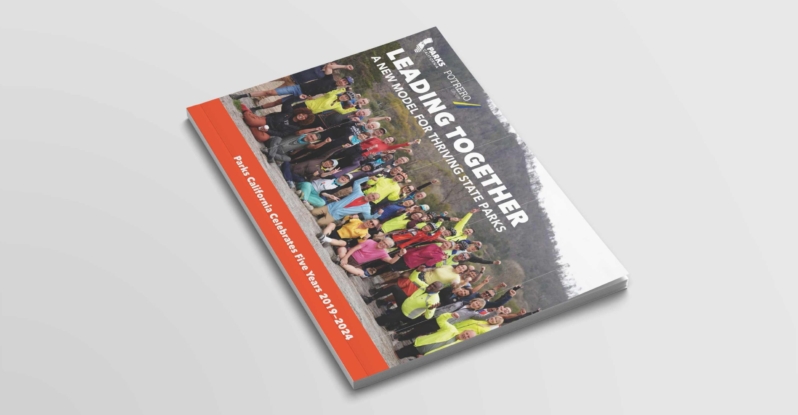Key Findings
- Park revitalization stimulates investment and development in surrounding neighborhoods.
- Parks organizations can play a lead role in bringing people together to plan for their community’s future.
- The community planning process engages a diverse array of residents, businesses, city agencies, community organizations, and institutions.
- Parks non-profits can leverage their organizational capacity to implement a wide range of programs that serve the community’s needs and garner its support.
Organization Description
The Garfield Park Conservatory Alliance is a non-profit organization that aims to enhance the environmental, social and economic vitality of Chicago’s West Side through a range of innovative programs. It was first formed after a significant portion of the conservatory plants were injured by a cold spell in 1994. This prompted the Chicago Park District to convene a task force to revitalize the Conservatory. This group eventually became the Garfield Park Conservatory Alliance non-profit in 1998. The Alliance cares for the Conservatory’s botanical resources, organizes programming and educational workshops, recruits volunteers, and fundraisers. Their programs target families, early childhood learning, school groups, adults, healthy living, and teens. In 2003, the Alliance became the lead agency in the East Garfield Park New Communities Program.
Program Description
East Garfield Park (“the West Side”) is located just two to three miles west of Chicago’s Loop. Until recently, the neighborhood’s population and businesses were in decline. Homes were demolished and 1,750 lots were left vacant as the population dropped from 70,000 in 1950 to 20,800 in 2005. However, following the Garfield Park Conservatory’s renovation, developers and investors began showing interest in the area. The New Communities program was established to ensure that long-standing residents and businesses benefit from neighborhood revitalization and participate in planning for the neighborhood’s future.
The initial planning process began with a kick-off meeting on April 22, 2004, and continued for almost a year. Monthly meetings, a bus tour, and planning workshops allowed participants to review materials, discuss issues, and build consensus. More than 400 participants identified the primary challenges facing residents of East Garfield and prioritized strategies for improving their quality of life. Education, housing, youth, arts and culture, and business/workforce development were among the top issues identified by an exercise in which participants placed “Garfield greenbacks” money into buckets to rank priorities. Ideas were also mapped out to gain a sense of the neighborhood’s land use opportunities.
The resulting “Quality-of-Life Plan” laid the groundwork for 48 projects and subsequent program development. These projects address physical development issues such as affordable housing, retail, and open space, as well as social issues such as youth, education, workforce development, health, safety, arts, and culture. The Garfield Park Community Development Council was established to guide and monitor implementation of the plan, and partner organizations were identified for a range of initiatives. Since then, the New Communities program has launched numerous programs including a youth empowerment network (“Green Teens”), an education network, housing and foreclosure prevention services, retail and real estate initiative business resource center, land use plans, and the Garfield Park Cultural Arts Coalition.
Project Partners
- Chicago Local Initiative Support Corporation (LISC)
- Over 60 community organizations, schools, non-profits, churches, public agencies, hospitals, businesses, and foundations
- More than 400 community member planning participants
Results Achieved
Since 2005, the New Communities program has implemented many projects. Recent highlights include:
In 2009 they:
- Hired 84 youth during for a 10-week internship program with a total payroll of 05,000
- Coordinated 17 local employers to hire additional youth interns and provide job training
- Completed a 1,800 square foot community garden and a 3-story mural with 15 youth
- Distributed 10,000 foreclosure response brochures to local renters and property owners
- Promoted the opening of 3 schools
- Helped mobilize 11,000 residents to play and exercise car-free during the August 1st Open Streets event.
- Provided after school programming to 70 youth, including 30 weeks of job readiness and environmental awareness instruction
- Installed 8 community-managed open spaces
And in 2010 they:
- Secured a 2-year grant for a Green Job training program for 50 ex-offenders
- Assisted a $55 million city program to purchase foreclosed homes and hired/trained local residents through the “Community Male Empowerment Program” to rehab them
- Opened a housing resource center to help tenants secure decent and safe housing
- Opened a culinary training center to provide job training and free or affordable food
- Ran an anti-violence summer basketball program that attracted over 150 local youth
- Installed 8 more community-managed open spaces
Timeframe (planning/execution)
- 2004: Kick-off and planning meetings
- 2005: Quality-of-Life Plan completed, 1st programs launched
Annual Program Budget/ Funding Sources/partnerships and type of support provided:
The Local Initiatives Support Corporation provides the Garfield Park Conservatory Alliance with two full-time staff positions, technical support, and a pool of loan and grant funds distributed on a competitive basis for project seed money. This is provided with support from a range of donors, public agencies, and foundations.
Address:
300 N. Central Park Ave. Chicago, IL 60620
Contact: Eunita Rushing
Email: [email protected]
Phone Number: (773) 638-1766



